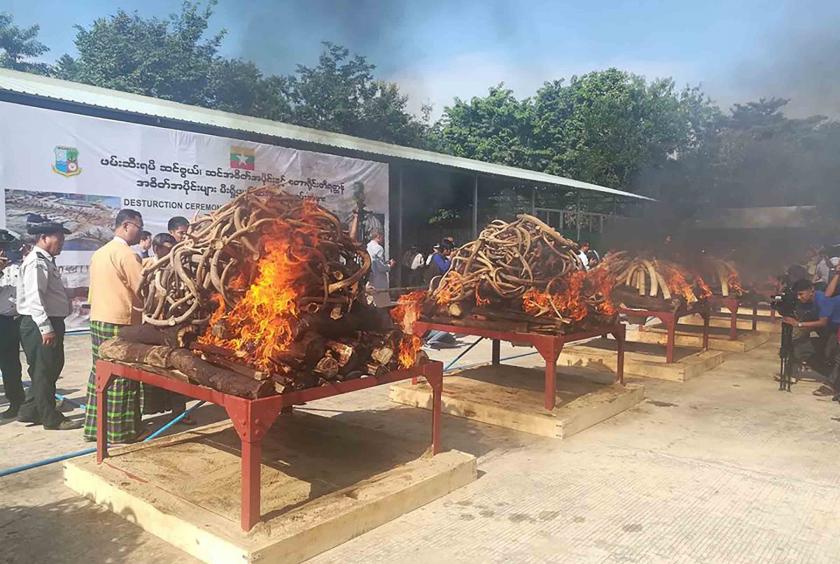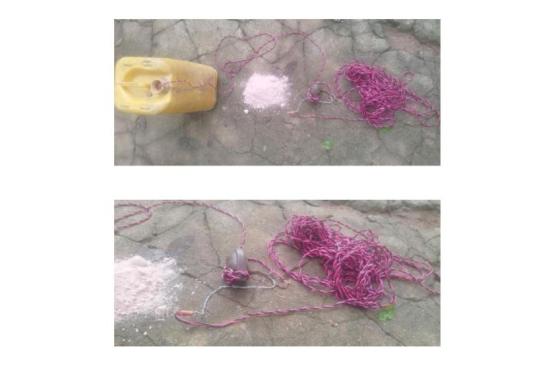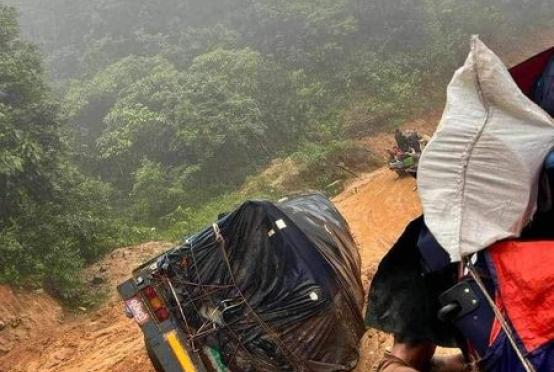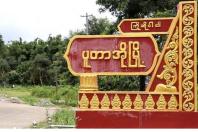Ministry of Natural Resources and Environmental Conservation burnt confiscated elephant ivory and wildlife parts in Nay Pyi Taw to combat illegal wildlife trade on October 4.
The Ministry of Natural Resources and Environmental Conservation organized the destruction of confiscated wildlife parts with the objectives of raising public awareness for law enforcement and promoting international cooperation.
The authorities destroyed 1.3 million US dollars worth of seized wildlife parts, including 277 ivory, 5 elephant bones, 222 tiger and various wildlife’s bones, 45 pieces of different wildlife skins, 1,544 different horns, 45.5 kilograms of pangolin scales and various animals’ parts weighing 55 kilograms.
Myanmar is a signatory to CITES, which means that hunting wildlife is illegal in the country. According to that convention, seized illegal animals’ parts need to be destroyed without selling or using them in any way according to Director-General of Ministry of Natural Resources and Environmental Conservation Dr. Nyi Nyi Kyaw.
“As Myanmar is a signatory to CITES, there are certain norms to abide by, one of which is that body parts of wildlife which were illegally killed must be destroyed. Otherwise, if we keep these items in a separate place or sold these items, those wildlife body parts become a market and there may be demand for buying these items. As a result, animals may be poached again in the future. Therefore, we have to destroy the ivory and body parts of wildlife,” said Dr. Nyi Nyi Kyaw.
Currently, poaching of elephants has increased in Myanmar at an alarming rate and government is pouring in effort for preservation and conservation of wildlife. Wildlife is one of the most valuable resources in biodiversity and is needed to be preserved for the interest of long term gain, said the doctor.
He added that by torching the wildlife products, people may aware that the wildlife are illegally killed or poached and the items from them are illegal. These illegal items shouldn’t be used. Without using or consuming the wildlife items and products, in some way, they (the public) came to acknowledge that not using is a kind of preserving the natural environment.
Ministry of Natural Resources and Environmental Conservation is keeping the body parts of wildlife elephants and tamed elephants at museums without selling these items and shown to the public.
After India, Myanmar stood second in the world for numbers of wild elephants but as the illegal trade increases, there remains only 2500 wildlife elephants and 5000 elephants owned by Department of Forestry and other private owners.
It is crucial to sustainably conserve the country’s natural resources for the sake of future generation. There are 42 protected zones which cover 5.79% of total country area, and another 19 sites that are proposed to be set as protected areas to restore natural resources for the future.
CITES (the Convention on International Trade in Endangered Species of Wild Fauna and Flora) is an international agreement between governments. Its aim is to ensure that international trade in specimens of wild animals and plants does not threaten their survival.
Because the trade in wild animals and plants crosses borders between countries, the effort to regulate it requires international cooperation to safeguard certain species from overexploitation. There are over 190 member countries in CITES.
















